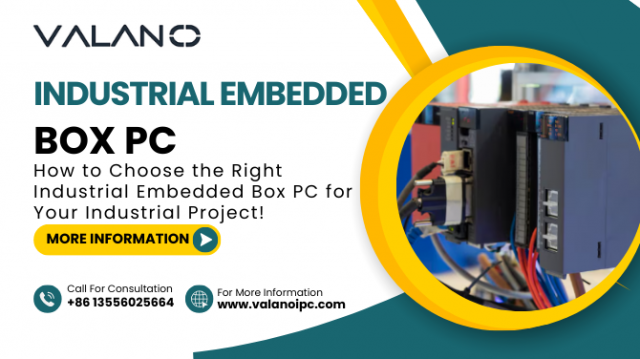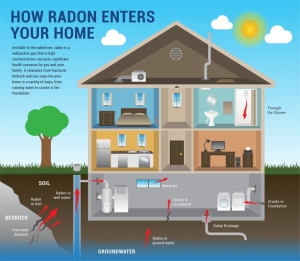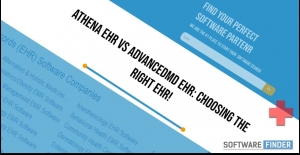In today's technology-driven industrial landscape, the demand for high-performance, reliable, and versatile computing solutions is higher than ever. From smart manufacturing and automation to transportation systems and energy monitoring, industries rely on rugged computing systems to process vast amounts of data, communicate with machinery, and perform real-time decision-making. At the heart of these applications lies a powerful component: the Industrial Embedded Box PC.
Unlike consumer-grade or desktop computers, an industrial embedded box PC is specifically designed to operate in harsh environments—such as factories, roadside enclosures, remote energy sites, and mobile systems—while offering long-term reliability, consistent performance, and industry-specific connectivity. These devices are often engineered with a focus on fanless cooling, wide temperature ranges, industrial I/O, compact footprints, and long lifecycle support.
However, with so many models, configurations, and specifications available, selecting the right embedded box PC for your project can quickly become a complex process. Not all PCs are built the same, and the wrong choice can result in underperformance, overheating, system failures, or compatibility issues. That's why making an informed decision is critical to the success of your industrial operations.
At ValanoIPC, we understand the technological challenges industries face when integrating computing systems into their environments.
Why Choose an Industrial Embedded Box PC?
It's important to first understand what sets these systems apart from standard desktop or business PCs.
Industrial embedded box PCs are purpose-built to:
- Perform reliably 24/7 in mission-critical operations
- Withstand harsh conditions like extreme temperatures, dust, humidity, and vibrations
- Include industrial-grade I/O for machine communication and legacy system support
- Offer compact, fanless designs for integration into control cabinets or tight spaces
- Provide long-term availability and product lifecycle stability (5+ years)
- Support specialized operating systems, real-time computing, and HMI interfaces
These PCs are not only machines; they serve as control hubs, data aggregators, security gateways, and the backbone of digital transformation efforts across many industries.
Key Features to Consider When Choosing an Industrial Embedded Box PC:
To help you determine the right specifications, let's explore the major factors and features that matter when selecting an industrial embedded box PC.
1. Rugged Design and Environmental Tolerance
The most defining characteristic of an industrial box PC is its ability to withstand difficult environments. These systems are intended to operate in locations that standard computers simply cannot.
Key considerations:
- Wide Operating Temperature: Ranges like -40°C to 70°C allow the PC to work without degradation in both freezing and sweltering conditions.
- Fanless Construction: Reduces moving parts, eliminates dust ingress, and increases lifespan.
- Shock and Vibration Resistance: Often achieved through MIL-STD-810 compliance, crucial for in-vehicle or mobile deployments.
- DIN-Rail or Wall Mounting: Securely mounts the PC in factory control panels or enclosures.
ValanoIPC offers rugged systems with IP-rated enclosures and extended-temp motherboards to survive industrial chaos without skipping a cycle.
2. Processor Performance and Thermal Considerations
Your application determines how powerful your processor needs to be. From simple data logging to running AI algorithms, choosing the right balance of CPU performance and power consumption is essential.
Processor options include:
- Intel Atom® and Celeron®: Low power consumption, suitable for HMI, IoT gateways, and basic control systems.
- Intel Core™ i5/i7 or AMD Ryzen®: Ideal for compute-intensive tasks like machine vision, AI inference, and large-scale SCADA.
- ARM-based CPUs: Power-efficient alternatives for embedded Linux systems or portable field units.
- Important tip: Higher CPUs generate more heat. In fanless systems, ensure the thermal design matches the processor's TDP.
3. Memory and Storage Flexibility
Storage and RAM requirements vary with each application. Systems used for simple device monitoring may require minimal resources. On the other hand, systems running local databases or processing video streams will need ample RAM and fast storage.
Look for:
- DDR3L or DDR4 RAM options with room for expansion (up to 64 GB)
- MSATA or M.2 SSD options, preferred over HDDs for shock resistance
- NVMe SSDs for high-speed data acquisition and rapid boot times
- Accessible storage bays or rugged, soldered flash for reliability
4. I/O Ports and Expandability
In industrial environments, connectivity is king. Your embedded PC must integrate seamlessly with sensors, controllers, PLCs, and external systems.
Essential ports:
- RS-232/422/485 serial ports: For legacy protocols and industrial automation control
- Digital I/O (GPIO): For alarms and hardware-level signaling
- USB 3.0/2.0 ports: For touchscreen interfaces, cameras, barcode scanners
- Dual or Quad LAN ports: Redundancy, EtherCAT, or network segmentation
- CAN Bus or Modbus support: Crucial for industries like automotive, energy, and logistics
- Expansion Slots (Mini-PCIe/M.2/PCI): For wireless modules, GPU cards, additional I/O, or storage
A PC lacking proper I/O may require costly external adapters and compromise reliability and performance.
5. Power Input and Power Protection
Industrial projects often operate on non-standard power supplies, so your embedded box PC shouldn't be limited to just 12V or 19V adapters.
Look for power features such as:
- Wide-range DC input (e.g., 9–36V or 10–60V)
- Overcurrent/Overvoltage Protection
- Wide Internal Voltage Tolerance
- Ignition sensing for automotive and transportation systems
6. Mounting and Form Factor
Depending on your installation environment, your PC must fit in tight spaces or specialized enclosures. Choosing the right form factor ensures easy integration.
- DIN-rail Mounted Box PCs: For clean cabinet installations
- Wall-mounted / Bracket PCs: To mount behind displays or on industrial arms
- Small Footprint Fanless PCs: Easily embedded in medical carts, kiosk machines, etc.
ValanoIPC engineers can assist with custom mounts and bracket designs to match your deployment space.
7. Operating System and Software Compatibility
Your OS should align with your application's software stack and runtime environment.
- Windows 11 IoT Enterprise
- Windows 10 IoT LTSC
- Linux Ubuntu / Debian / Yocto
- Real-Time Operating Systems (RTOS)
- Virtualization / Hypervisors
Some embedded systems run containerized applications using Docker or edge AI inference engines like NVIDIA Jetson or Intel OpenVINO. Make sure your PC supports the necessary libraries and kernels.
8. Longevity, Lifecycle, and Certification
In industrial settings, projects may span multiple years. Replacing systems mid-deployment due to discontinued hardware can be costly.
Evaluate:
- Lifecycle availability: Look for 5-7 years of support and availability
- Component-level reliability: Use of industrial-grade capacitors, BOM control
- Certifications: CE, FCC, UL, EN50155 (rail), ISO 9001
This is where commercial short-term PCs fail and where industrial-grade systems like ValanoIPC's Industrial Embedded Box PC series shine.
9. Remote Management and Predictive Maintenance
Modern embedded systems can be monitored and maintained from remote locations to avoid downtime and reduce on-site visits.
Look for:
- Intel vPro or AMT support
- Watchdog timers
- Remote BIOS/firmware updates
- Cloud monitoring integration
These features are essential for predictive maintenance and centralized industrial control.
Let's explore practical scenarios where a robust industrial embedded box PC plays a critical role:
- Factory Automation
Used to control PLCs, collect equipment data, and run HMI interfaces. High serial port counts and GPIO are key. - Smart City Infrastructure
Ideal for surveillance systems, traffic control, and kiosk management. Requires multiple LANs, PoE, and fail-safe power input. - Railway and Metro Systems
EN50155-certified PCs with vibration resistance and wide power input provide onboard computing for trains or real-time scheduling in stations. - Medical Equipment
Compact, EMF-safe systems that run diagnostic imaging software or patient monitors. Must meet IEC 60601-1 standards. - AI and Vision Inspection
High-performance PCs with GPU support and PCIe expansion handle ML model inference, video analytics, and defect detection at the edge.
The right industrial embedded box PC can make the difference between a successful deployment and one riddled with failures, reboots, and costly maintenance. By focusing on ruggedness, I/O compatibility, environmental tolerance, processing power, and lifecycle support, you can ensure your system is built to last—and deliver results.
Frequently Asked Questions (FAQ)
Q1. What is the difference between a commercial PC and an industrial embedded box PC?
A: Industrial embedded PCs are purpose-built for ruggedness, longer lifecycles, wider operating temperatures, and specialized industrial I/O—making them suitable for 24/7 operation in harsh environments.
Q2. Can I use an industrial embedded box PC outdoors?
A: Yes, if the PC has an extended temperature range, waterproof housing, and necessary ingress protection ratings (e.g., IP65 or IP67), it can be effectively used in outdoor deployments.
Q3. How long is the lifecycle of a ValanoIPC embedded box PC?
A: Most of our models support 5 to 7 years of product availability, ensuring consistency for long-term deployments.
Q4. What operating systems can I run on an embedded box PC?
A: ValanoIPC systems support a wide range of OS platforms, including Windows IoT, Ubuntu Linux, Yocto, Red Hat, and real-time operating systems. Dual-boot or virtualization is also possible.
Q5. Are your Box PCs customizable?
A: Absolutely. We offer options for custom I/O, OS pre-installation, connectivity modules, thermal solutions, mounting kits, and even full OEM branding.
Q6. Do you offer technical support or integration services?
A: Yes, our expert team can assist with hardware integration, BIOS adjustments, OS imaging, and documentation to help you go from prototype to production with confidence.
Q7. Can I order a sample for testing before a bulk purchase?
A: Yes, we encourage pilot projects to test and validate hardware. Contact our team today to request a development kit or evaluation unit.






